McHitch Trailer Hitch
Doc Rader 09.08.22

My Conqueror UEV 490 originally came with a Max Coupler–a very common off-road, full-articulating hitch. I always hated it. It was so difficult to line up. The elevation had to be just right. Once you dropped it into the winged receiver, you had to work it back and forth to align the holes–and I ALWAYS had to bang it with a hammer to seat it correctly.
This past spring, while doing maintenance, we noticed that the plate that holds grease next to the joint had popped loose inside (totally inaccessible for repair), and also that the articulating joint was slightly bent.
As that was a crucial part of the system, we decided to upgrade to a different hitch system. There are a number of options out there, but we decided to go with the McHitch, mainly because of the simplicity of hooking up and the ease of maintenance–its basically a giant U-joint.
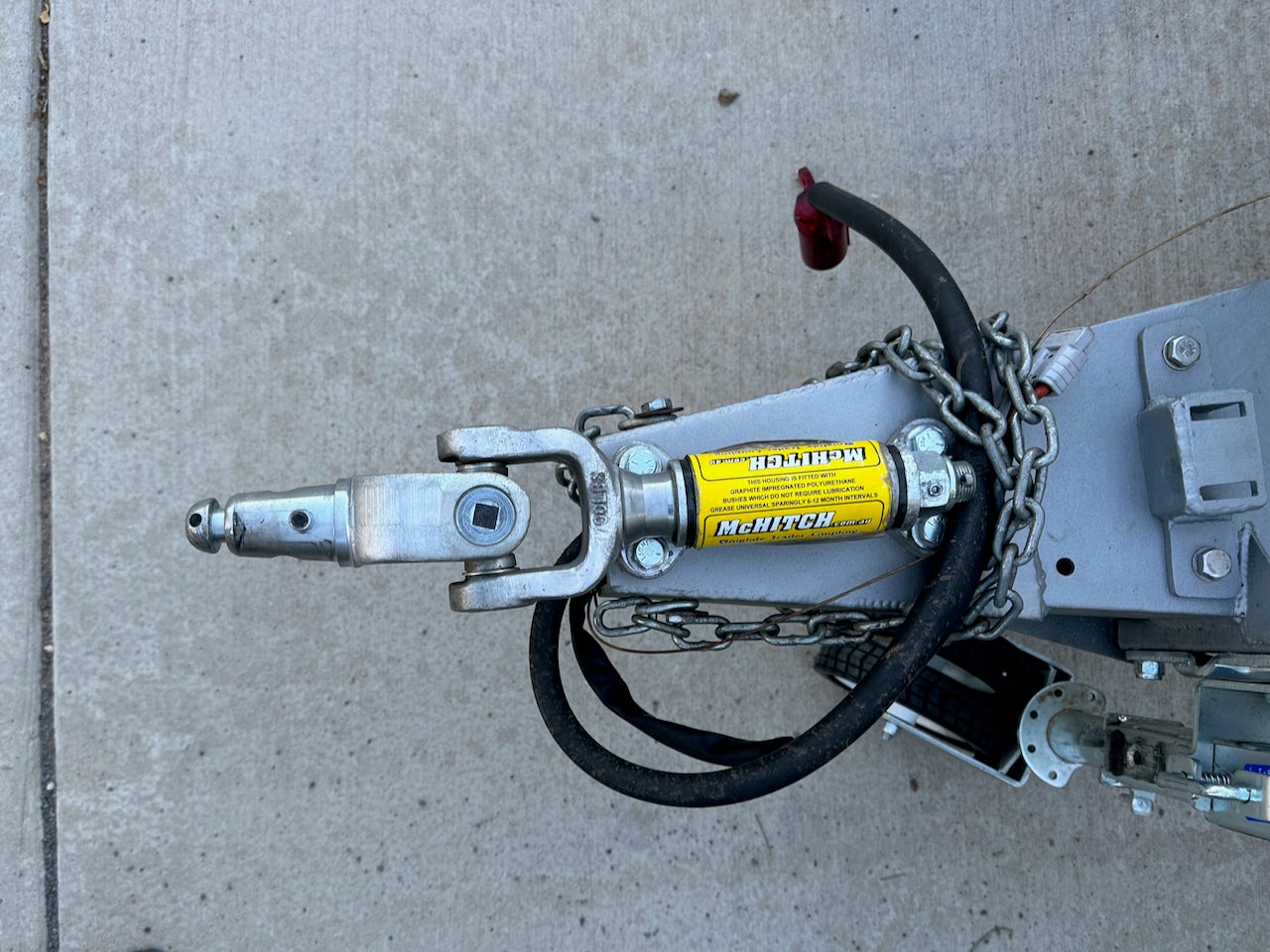
Specifications
The newest version of the McHitch boasts a hi-tensile Chromoly shaft, a 7/8″ and 1-1/4″ shank stud, and a set of 9/16″ hi-tensile bolts. This hardware gives a 9,000-pound capacity.
- A super low height of 125mm at its highest point. This is the lowest coupling on the market.
- Capable of over 90 degrees of movement on every axis.
- The bolt-hole dimensions (center to center) are a standard size of 185mm x 55mm, and can easily be manipulated slightly due to the holes being elongated.
Install
The original Max Coupler was the “channel” version meaning that the trailer portion slid into a 2-inch receiver mounted to the frame. This receiver was not only bolted down but “forever” welded, so the first step was removing that.
We ended up adding a foot onto the tongue on the trailer and then bolting the McHitch in place. No need to weld it down–everything on an off-road rig should be field repairable–or at least removable so it can be worked on. A large exposed U-Joint is pretty simple to inspect and potentially even repair.
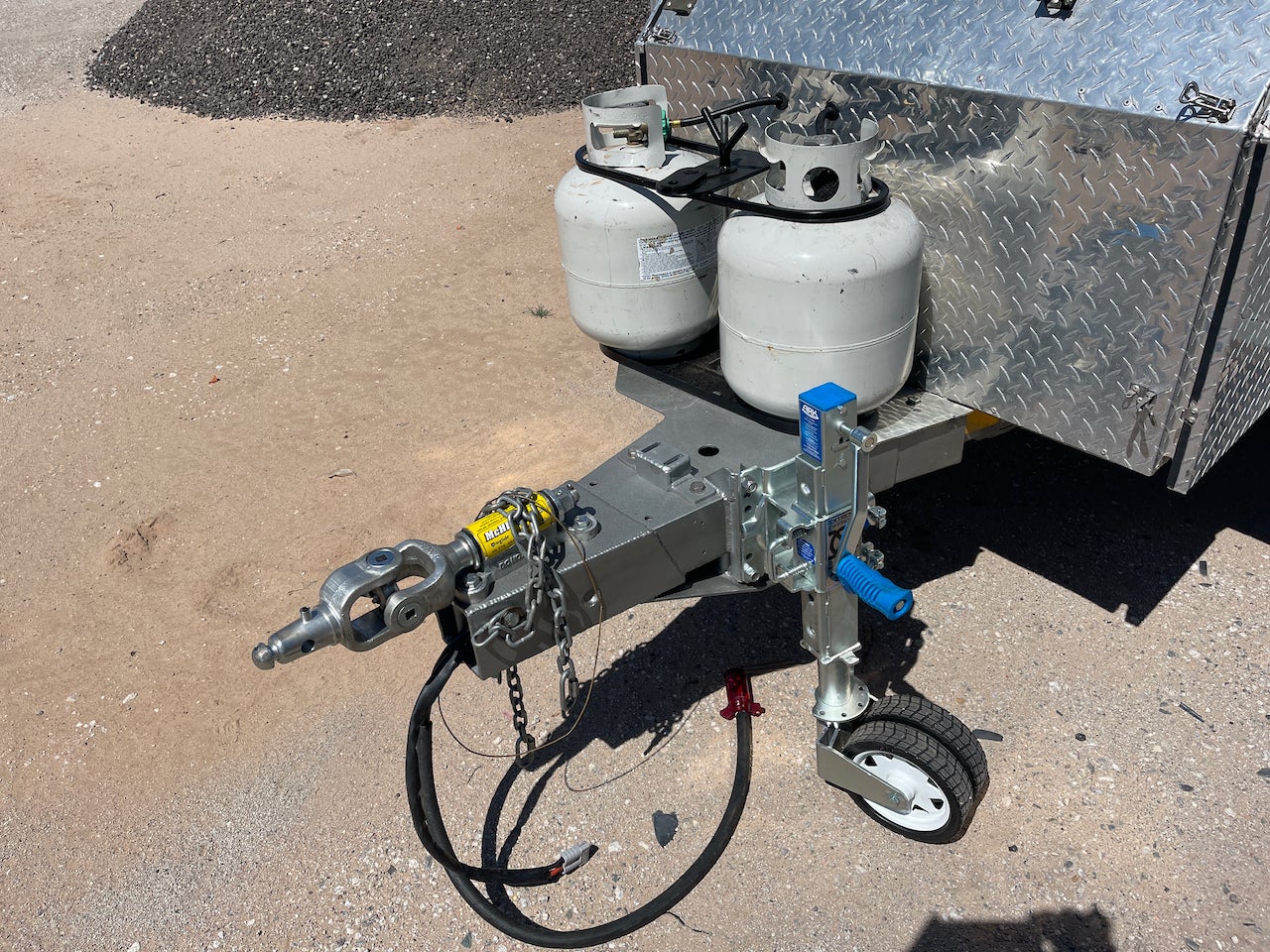
If you don’t have a pre-existing complex setup (or stuff welded in place), your installation is likely just drilling out the holes for the base plate.
The receiver component was even easier–just bolt it onto the drop hitch.
Hooking up with the McHitch
This is probably the best part. All you need to do is align the height of the pin on your trailer’s tongue to the receiver portion on your hitch. Then just back up. You don’t need to be all that accurate. So long as that pin is somewhere within the area of the hitch plate, as you back up, the pin will guide right into the receiver.
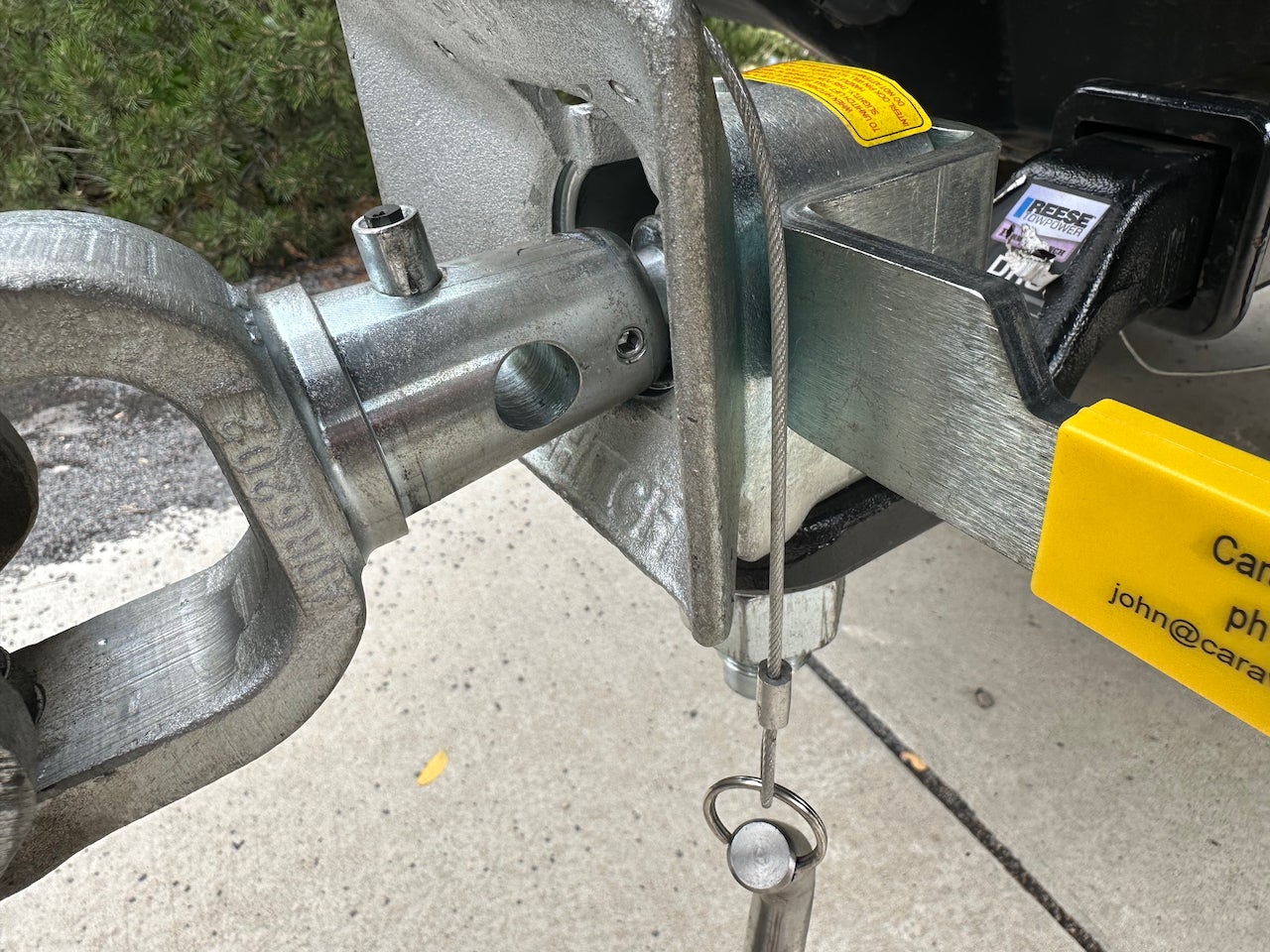
A top-mounted stud needs to be pointed upward–this helps ensure the joint starts in the correct orientation.
As soon as you have seated the pin, the locking lever will automatically secure itself. As the pin inserts into the receiver, it pushes the lever up and out of the way. Once it hits the right depth, the lever will drop into the slot on the pin, securing it. All you have to do after that is run the hitch pin through the hole to prevent the lever from lifting. No more hammering the hitch pin to drive it through.
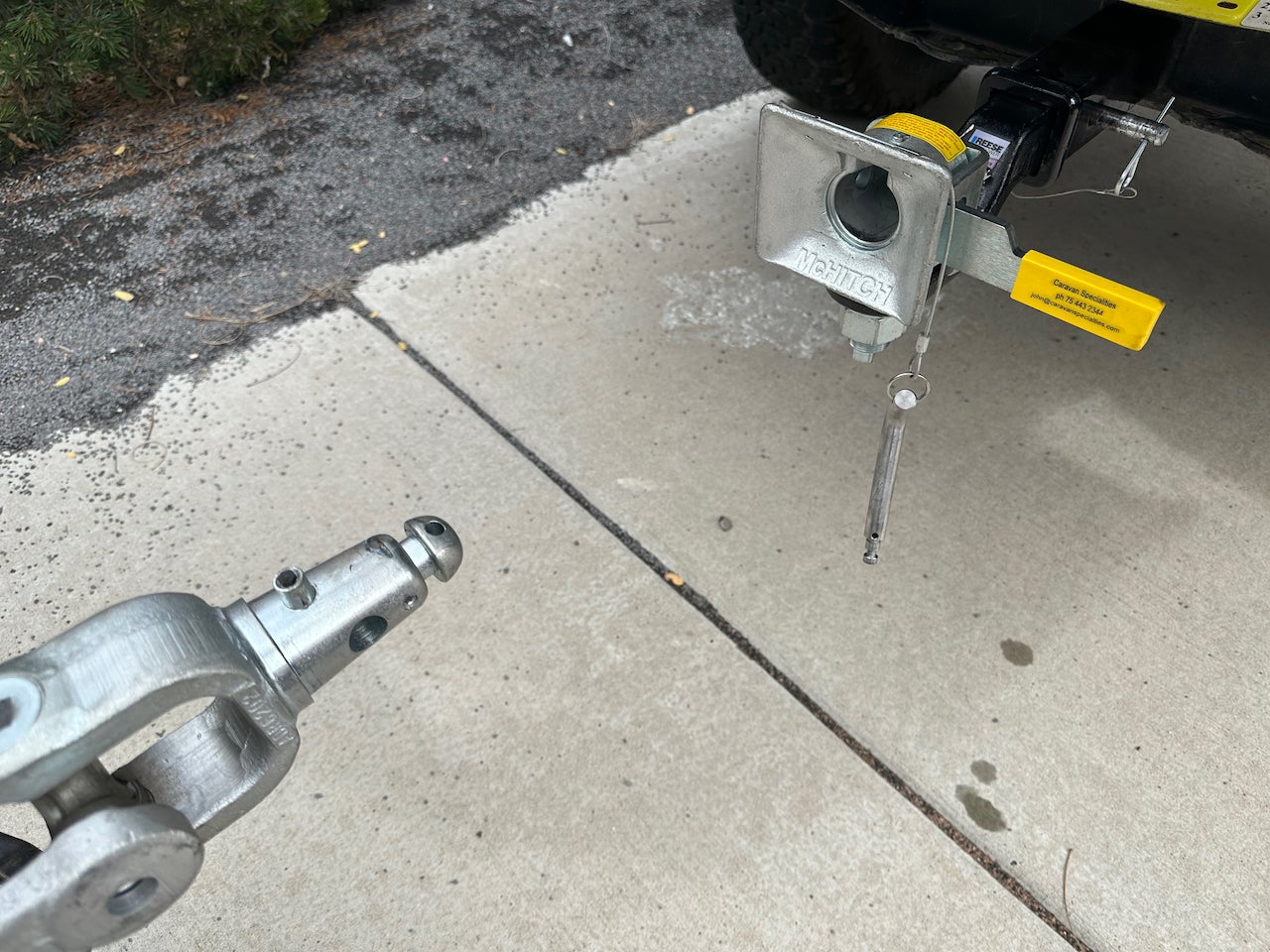
My wife used to hate hooking up the trailer–it was more than a few minutes of precise alignment, hammering, and a lot of cursing to get it done. Now it is easy enough she can do it by herself.
Towing with the McHitch
One of the reasons to go with something other than a ball hitch or a ring and pintle is because you want to eliminate slop in the connection. That slop translates to clanking and “thunking” noises as you drive and can be annoying on long trips. And when you go off-road and have the vehicle and trailer doing their own thing, metal-on-metal noises can be worrisome.
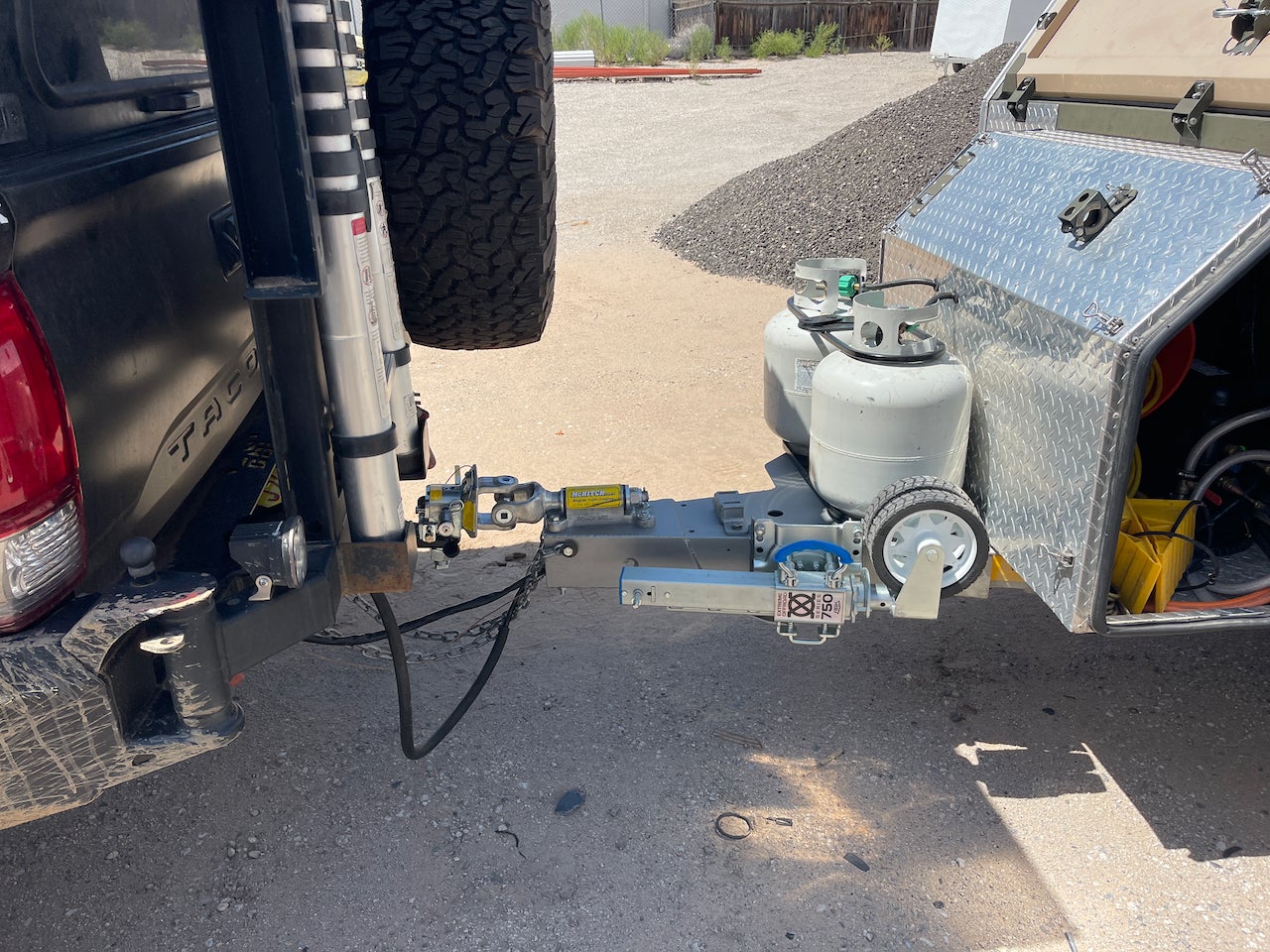
The McHitch is super quiet and maintains a tight connection. There is no more to say about it. Aside from the weight (and that large boxy thing in the mirrors), I wouldn’t know I had a trailer connected.
Final thoughts…
The McHitch has been one of the best upgrades I could have added to my trailer. It was exceptionally expensive (the price for the model I got was a stout $750; install and fab work added another few hundred on), but the amount of time and frustration it saved is well worth it.
Another benefit is that my wife is comfortable hooking up the truck and trailer by herself, which gives us some redundancy that we did not have before.
Very few offroad hitches are rugged enough for the kind of abuse my traveling companions and I ask of our equipment, and the McHItch certainly fits the bill.
Check out their website and order one if you secretly dread hooking up your trailer: https://www.mchitch.com.au/
Off-Road and Overlanding is sponsored by
To subscribe, visit: https://subscribe.onxmaps.com/offroad/purchase/membership
